The Murmuring of the Forest Multitude
An interview with Stefan Laxness on the practices and promise of Community-Led Landscape Restoration
In May 2025, Stefan Laxness, a Doctoral Fellow at the Institute for Landscape and Urban Studies (LUS) at ETH Zurich, brought together international and local representatives from community-led restoration groups in Tbilisi to conduct a series of tours and workshops. I interviewed Stefan after the workshops to learn more about his research and the outcomes of the sessions.
This interview has been edited and condensed for clarity.
Sarah Cowles: Can you tell us about your research in community-led landscape restoration and the recent exchange in Tbilisi this spring?
Stefan Laxness: The event in Tbilisi was a scientific exchange funded by the Swiss National Science Foundation, titled “Community-led Landscape Restoration in Science and Practice.” The exchange aimed to build upon discussions in the context of my doctoral research on this subject with five other community organizations from across Europe. The group included Joám Evans Pim of Fundacion Montescola , Nik Völker and Corinna Lawrenz of Veredas da Estrela, Ian Thomas of Welcome to Our Woods, Maggie Brand, Deme Gorgadze, and Data Tsintsadze of Napirze, Ana Trapaidze of Dighomi Meadows, and Nino Jabidze Free University of Tbilisi. I also invited external individuals to bring different perspectives on landscape restoration and nature conservation, including Mark Walton from Shared Asset (UK), Prof. Dr. Jaboury Ghazoul, Professor of Ecosystem Management and Environmental Systems Science at ETH Zurich, and Veronika Schick, PhD student in the Natural Resource Policy Group at ETH Zurich, Prof. Dr. Bram Büscher, Professor and Chair of the Sociology of
Development and Change group, Wageningen University; and Amrita Kaur Slatch
DAAD Doctoral Research Scholar, RWTH Aachen University. Most importantly, it was a celebration of our work and knowledge exchange around the active projects in Georgia, specifically the floodplain forests of the Mtkvari River, including Napirze in Rustavi and Dighomi Meadows in Tbilisi.
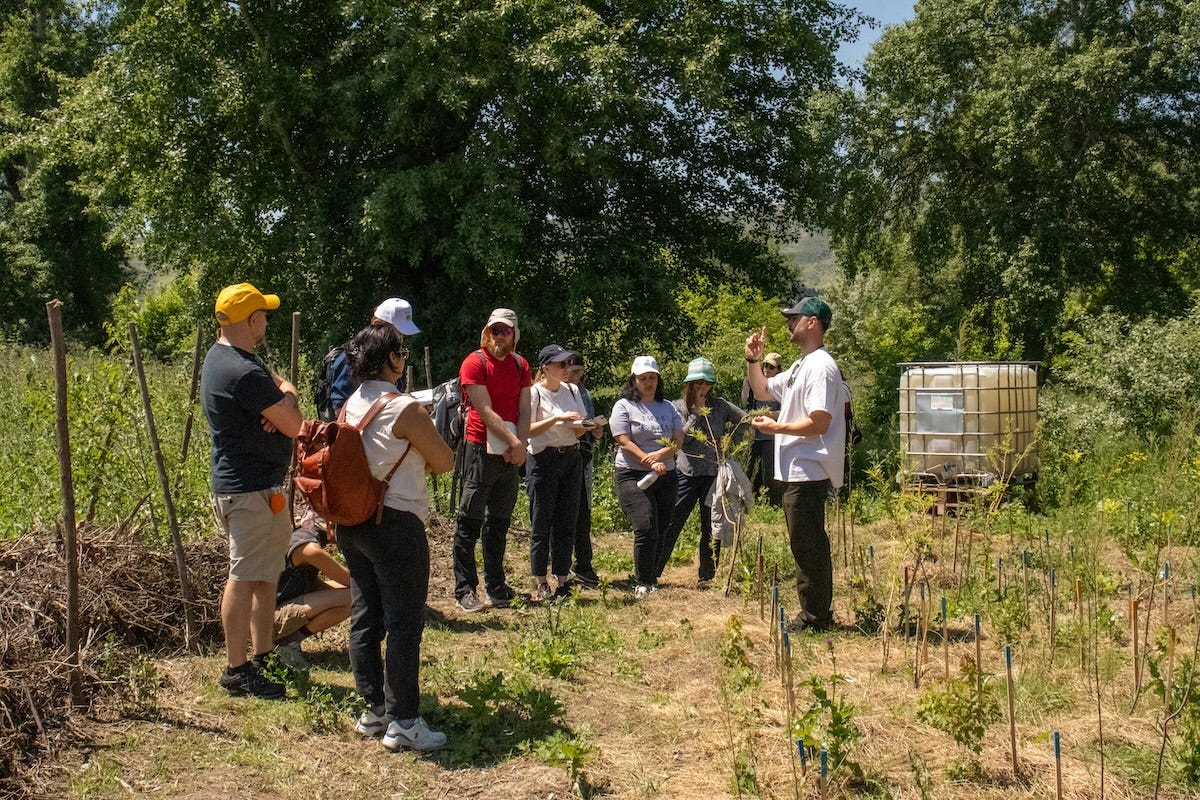
SC After graduating from the AA with a degree in architecture, and a brief stint in commercial practice, you worked for Forensic Architecture, an interdisciplinary practice investigating historic and contemporary state and corporate violence, and reconstituting the players in spatial narratives.
In the case of landscape restoration, you are studying the actors who restore a damaged landscape, its ecosystems, and/or adjacent societies, following the impacts, sometimes violent, of state and corporate actions on that landscape. With restoration, some lands are no longer impacted, while others remain threatened and continue to be degraded. What brought you to the restoration side of the timeline?
SL I came to landscape restoration through some serendipity, where I witnessed the work of Froxán Commons, a community-led landscape restoration of a former eucalyptus plantation in Spain. There, the restoration projects are linked to a broader, slower environmental violence. Though often less devastating than the cases we studied at Forensic Architecture, there are commonalities, such as unequal access to resources, histories of exclusion, and ongoing attempts to usurp, degrade, and expropriate land in Portugal and Spain, where these violent tactics facilitated industrial eucalyptus production. Now, there’s Dighomi Meadows in Tbilisi, where the municipality did not stop the illegal mining of public nature lands in the floodplain. I saw these community-led restoration efforts having effects beyond a normatively good environmentalism, by responding to the conditions of injustice and violence that are built into the territory.
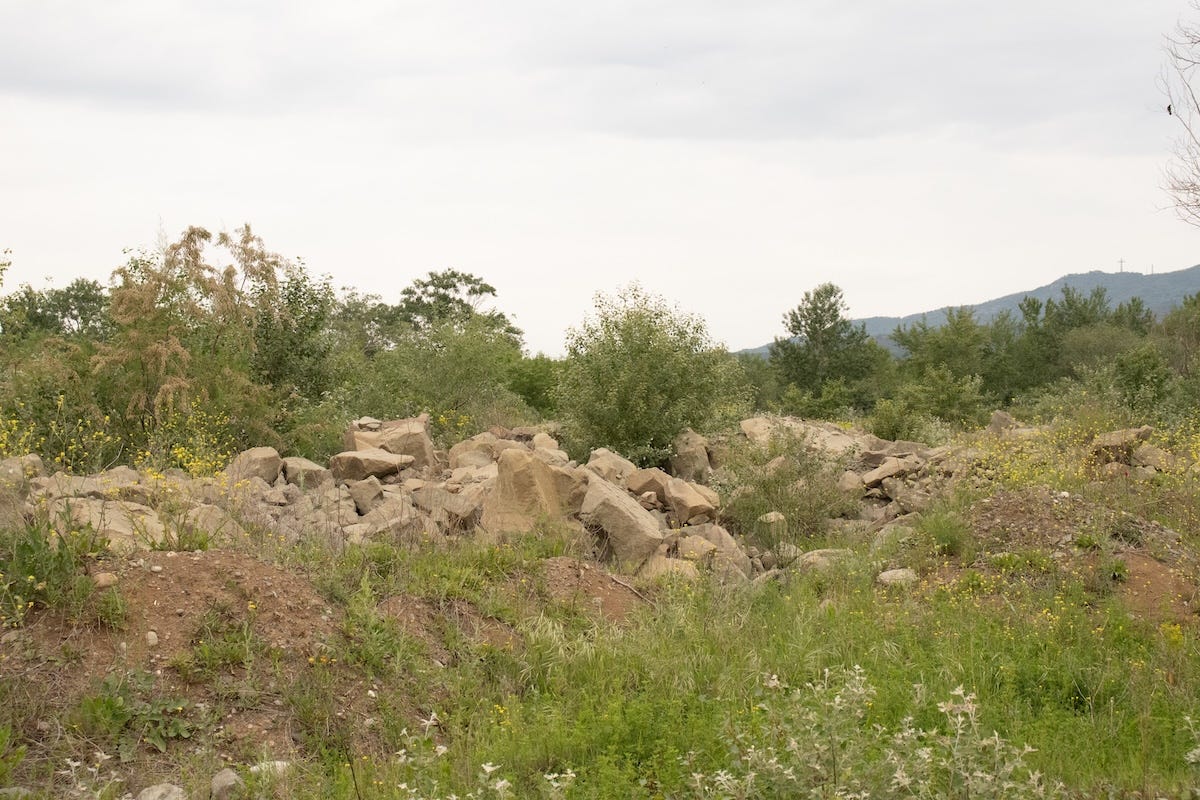
SC You were initially interested in rewilding and noted that while humans delineated areas to be rewilded and dispatched resources, human interaction remained on the sidelines, choreographing the actions but not part of the ensemble. You mentioned a murmuring of human activity that is part of community-led restoration. What are the other differences between community-led restoration vs. top-down rewilding in terms of method and ideology?
SL Rewilding was an exciting proposition for me: how to reinvigorate abandoned areas by reintroducing megafauna. It felt slightly exotic and slightly dangerous and wild, but the more I engaged with literature, my critique was that rewilding is centered on depopulated and abandoned areas. The practice doesn't address why these places are depopulated or abandoned, but it serves a political agenda that benefits people, not necessarily those who had to leave or abandon their lands. We should question who is pushing for depopulation in the name of rewilding.
Rewilding, in its original sense, refers to the passive management of ecosystems through megafauna—a top-down, scientifically managed approach. In contrast, community-led restoration is a practice of working from the ground up, experimenting, and building networks with other people who continuously engage with the land, and does not exclude the possibility of rewilding.
In the case of Froxán, it's nominally a rewilding project, but where the imaginary, the politics, and the labor are enacted by a broad segment of people from throughout the territory. It wasn't an isolated group; it was deliberately open to the participation of others.
In Froxán, the human sounds were almost deafening. There were conversations, chainsaws, and trees falling, the clinking of cutlery on metal dishes, imbuing the landscape with a murmuring presence of people.
Regarding the sensory dimension of these practices, though these places were often deemed abandoned or depopulated, in Froxán, the human sounds were almost deafening. There were conversations, chainsaws, and trees falling, the clinking of cutlery on metal dishes, imbuing the landscape with a murmuring presence of people.
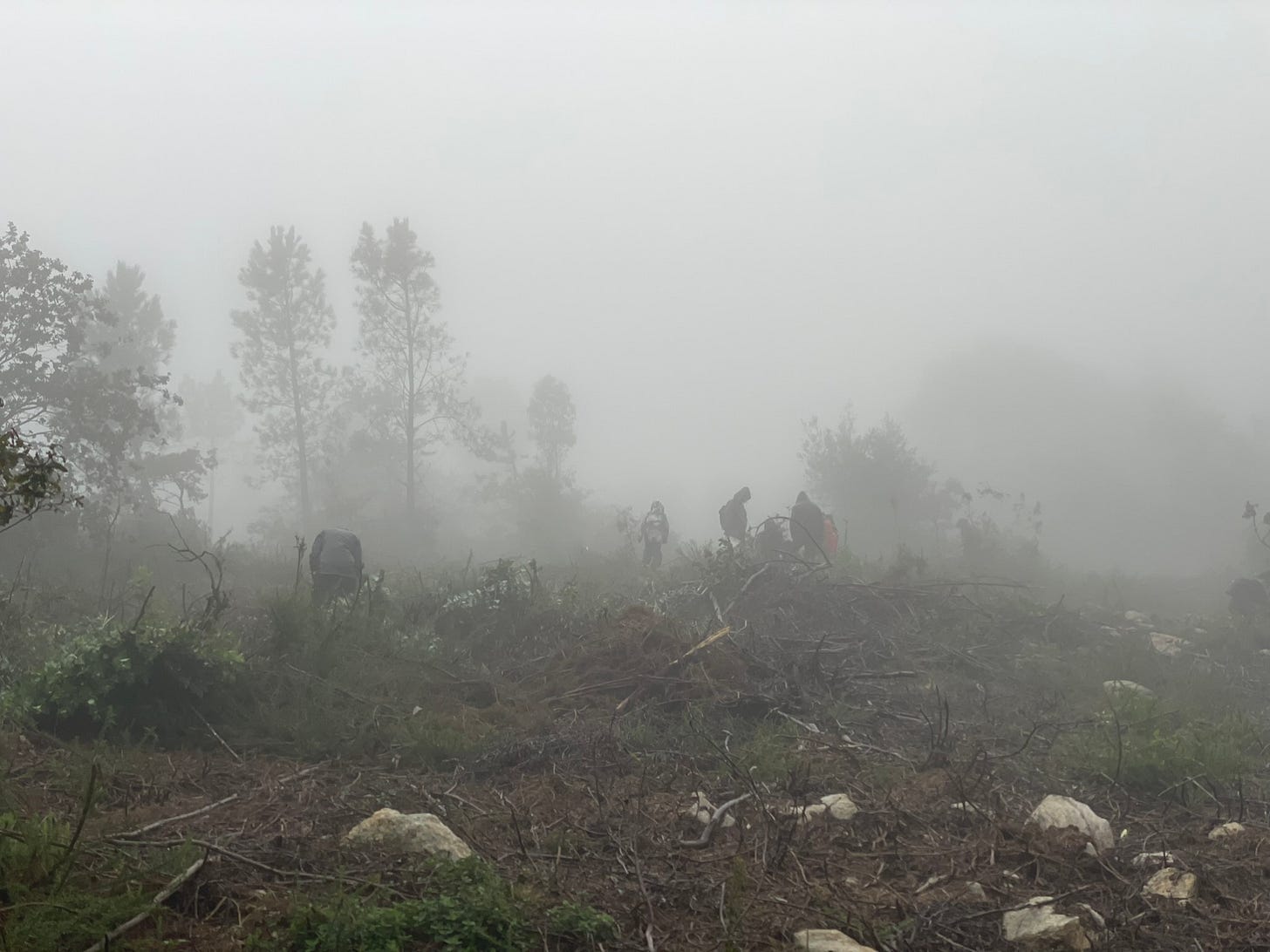
SC What are the key differences between community-led landscape restoration and ecological/scientific restoration in terms of practice and approach?
SL While scientific ecological restoration involves a level of experimentation, uncertainty, and consensus building, it’s done within the boundaries of a reasonably stable, bounded system. Stakeholders and authorities, such as land owners and the government, decide to restore an area. With that scientific expertise, they focus on a specific area. Communities, on the other hand, are starting from a minor position of power. It might not be their land, and they don't have the backing of the state, nor scientific expertise in their favor, but they know that they need to do something.
Community-led landscape restoration is a process of trial and error and capacity building that starts from a singular point of desire.
Restoration ecology is practice-based work. You need to hire contractors, you need volunteers, and you want your citizen bird watching group to get involved for public buy-in. One of the challenges is the cost and time of labor. Those aspects are shared; it's the same actions at the end of the day, but perhaps what's missing is the ready mobilization of funding, skilled labor, and measurement.
Measurement is a critical component of scientifically based restoration, involving the baseline before, during, and after the restoration process. It is often challenging for communities to measure their progress because they lack the necessary capacity, budget, or labor to do so.
SC Yes! One of the things we most regret is not taking a baseline survey of Arsenal Oasis before opening the water system and creating the ponds.
SC The climate crisis has led to numerous landscape restoration and afforestation projects. How has crisis driven the emergence of new restoration practices?
I’ve taught at the AA with “crisis” as a framework for the studio to think through territorial design. It’s defining a specific, urgent condition in space and a time frame for response. Because if you declare something a crisis with one year to respond, another with 50 years, it’s a different response—different strategies, materials or resources.
In this idea of crisis, there is also this idea of latency. A crisis occurs at a moment when certain conditions come together, allowing for the condition to be recognized and acted upon simultaneously.
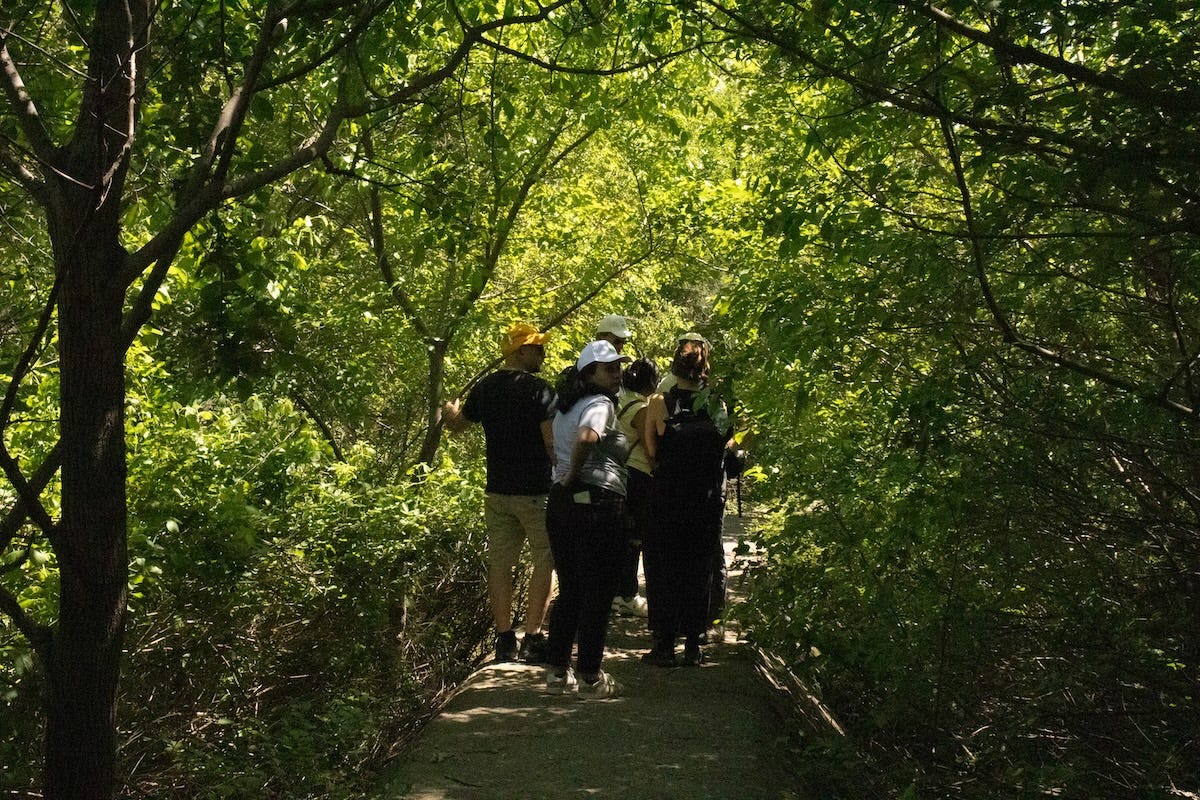
Community-led landscape restoration initiatives I have worked with began around 2014 to 2019, driven by environmental legislation that recognized specific responsibilities and climate crisis targets. People on the ground recognize that the territory is mismanaged, seizing on some of the vagueness of these climate policies and appropriating frameworks to do the work themselves. Welcome to our Woods, a response to the 2015 Wales Well-being of Future Generations Act, which enshrines the responsibility of public bodies to act in ways that protect future generations, and the results are measured annually. They leveraged the Act to pressure the Welsh government to begin co-management of state lands. These groups are interesting for policymakers and donors. We're at a specific junction where environmental degradation can be addressed by local communities and linked to high-level policy.
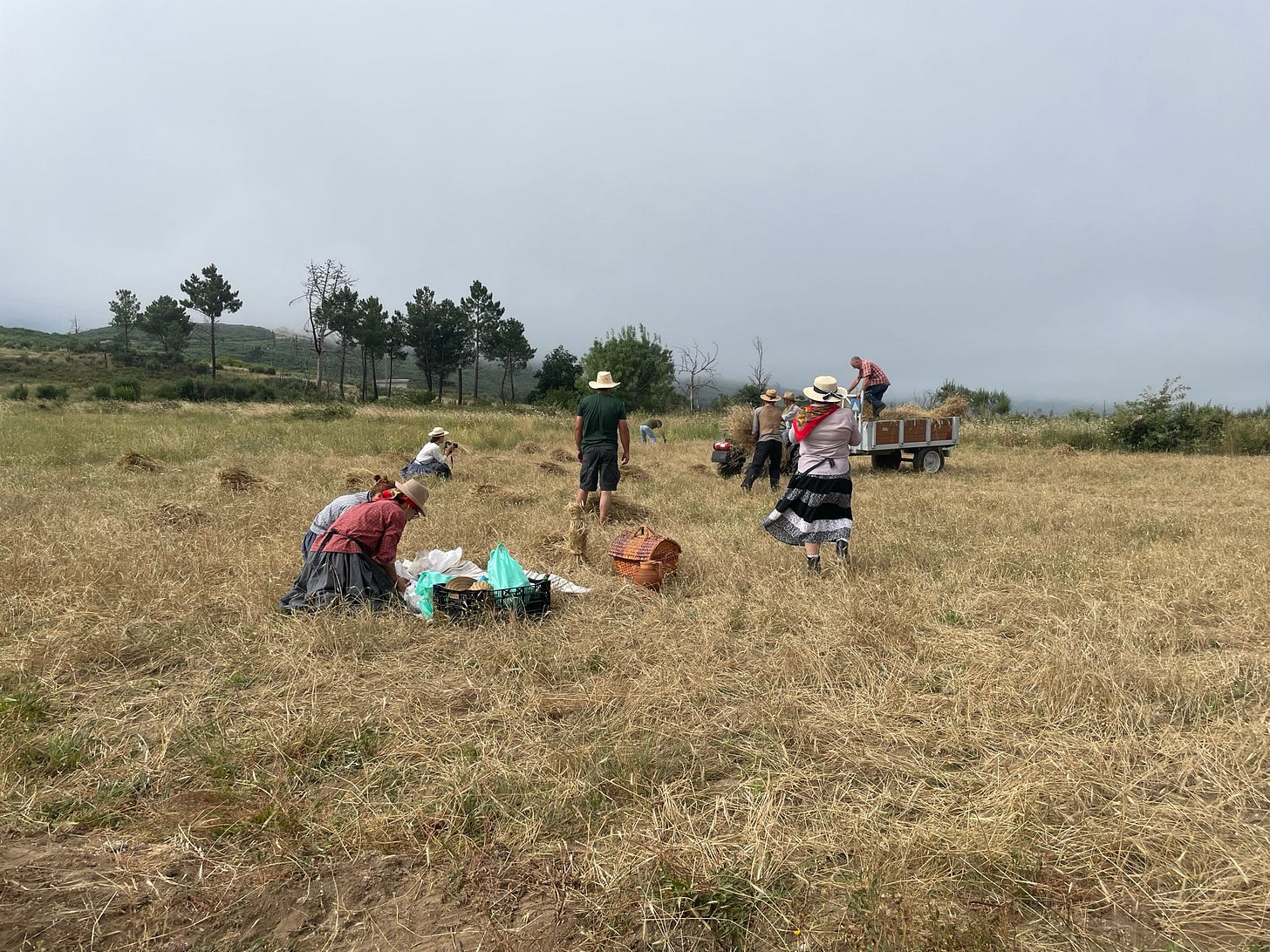
SC Most of the groups don’t own the land they are restoring, and often conduct the work without formal permissions or leases. These lands are not so degraded as to be a lost cause, yet are not attractive enough for local private or public exploitation. There’s something about ambiguous land uses and location, or degraded/abandoned conditions, that suggests that “something can be done here, is worth doing here, and no one will stop you.” Are there other landscape characteristics and conditions that elicit this stewardship? And what kinds of activities change the relationship, for example, when the city might decide to lend financial support or create an MOU for the group to manage the lands formally?
SL There's always a lot of talk about environmental conflict between different stakeholders or different actors over access to resources and the inequity between them. In the groups I am studying, there’s a notable lack of conflict. That is not to say that there is no conflict, but rather that there is no significant loss if the community organizations take over. They are accessing and transforming degraded land, or at least it's not economically profitable enough to justify strong conflict. They might not always ask permission at first. Over time, they gain tacit or explicit permission through activities such as bird walks, guided tours led by local or international experts, and meetings with local government officials. Volunteer to help overcome labor challenges of restoration work. The activities allow you to maintain a foothold in the landscape when you can't achieve more ambitious projects.
Rituals are an affirming part of this work, as restoration is a long-term process; it's essential to create moments that also celebrate the hard work that has been done.
SC Rituals are a part of community-led restoration that isn’t present in scientific restoration, such as seasonal celebrations and activities.
SL Rituals are an affirming part of this work, as restoration is a long-term process; it's essential to create moments that also celebrate the hard work that has been done. In Froxán and Galicia, regular eucalyptus clearing actions are often followed by food and drink, and some form of community discussion. People sing songs about" de-eucalyptization,” translating ancestral practice to a contemporary setting. They're very low-budget and somewhat low-intensity ways of maintaining a presence and visibility.
SC Is an urban connection critical to the success of these initiatives?
SL With exceptions, most projects are connected to urban areas, meaning that most people's livelihoods are not based on the land; they’re not farmers or foresters, which leads to different ideas about different futures for the land.
SC You mentioned that these activities create an “urban commoning.” Can you describe that in more detail?
SL Commoning is the process and practices by which a collective refills the material and immaterial stock of a community. Commons has been about practices of sustainable management of natural resources, but urban commoning is different—it is practices and processes in a malleable space where people can interact.
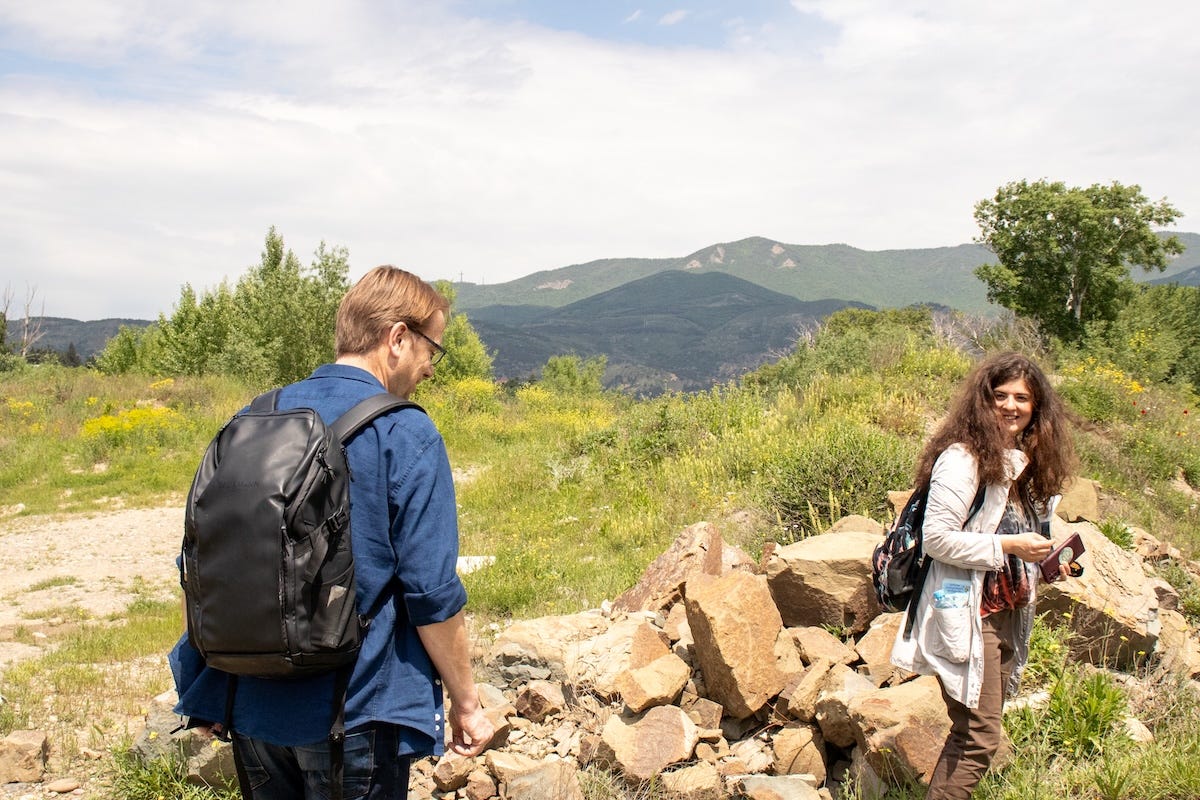
SC So, in terms of community-led restoration, a communal action leads to a physical commons.
SL It's about making things open, accessible, and a place of potential for others. While at the same time trying to derive benefits that allow them to sustain that process, because you can't just create an open space and then run yourself into the ground. You must create a system that enables people to sustain the effort. My colleague Nitin Bathla coined a different term—"restorative commoning”—for initiatives that are not necessarily tied to typical “green economy” thinking but are open to other imaginaries and pluralities.
SC How do these groups evolve in parallel with their sites? What are some examples of groups gaining or losing power and influence relative to their initial goals?
SL All groups experienced tremendous evolution and progress, gaining power and access over the past few years. Many are meeting their goals, while some have changed course. Welcome to Our Woods’ initial goal was to produce goods from the diseased industrial larch plantations and educate people about lumbering and woodworking. There were regulatory complexities they couldn’t overcome to achieve their full vision, but recently, they built a sawmill and are teaching vocational courses in partnership with Black Mountains College.
SC. It becomes a much finer-grained mesh of production in the process, transforming sometimes monocultures of trees into biodiverse landscapes with heterogeneous activities.
SL Yes, this ties back to the differences between scientific and community-led restoration, where the ecological dimension is often difficult or not permitted, so socio-cultural narratives and activities are foregrounded. A notable aspect of these initiatives is the blurring of boundaries between environmental, economic, and social aspects. Sustainable community-led forestry fosters biodiverse woodlands that can attract tourists, yielding positive economic benefits.
SC In the Tbilisi workshops, Ana Trapaidze of Dighomi Meadows commented that the restoration of the floodplain has become a means toward an end, a framework to jump-start a new “landscape citizenship” in Georgia. How do you see these de facto citizenships that arise in the context of restoration specifically being conditioned by ecology, watershed, the more-than-human, and environmental justice?
SL In the exchange, someone said landscape restoration is a self-evident action–if you want to fix something, you can restore it. But when we look at why a place needs restoration? What are the political, ecological, or economic failures that contributed to the decline of a landscape? Anna Trapaidze of Dighomi Meadows said the work addresses not only a physical condition or an ecological condition in the landscape, but also the problematic institutional and social relationships that have been created over time. One part involves restoring the landscape, and the other involves restoring connections and accountability in local government.
The work addresses not only a physical condition or an ecological issue in the landscape, but also the problematic institutional and social relationships that have been created over time.
SC What are examples of how landscape architects might contribute to the process of restoration in the community-led model? Could this approach reveal a more effective and generative role for landscape architects in community engagement?
SL We have the example of Maggie Brand, who, as a 2025 Fulbright scholar, worked to direct Napirze’s spatial and planting design, as well as the visual communication of the project. Her expertise is in the service of the group, and she applies her skills to their goals and is attentive and embedded. Often, the design community believes their work will be all that is necessary to activate things, but there might be a disconnection with stakeholders that can build the required momentum. And this doesn’t only apply to designers; it applies to scientists, social scientists, and anyone who offers specific knowledge to a community-led project. These groups are so generative and have a lot to teach us about the places they are working.
SC I agree that there is potential in a co-evolution of the project, where things the designer wouldn’t consider, and vice versa, can emerge. Through collaboration, something new and unexpected can also emerge.
There is value in feeling connected to a network of support, leadership, and inspiration that exists out there. Someone in the exchange said, "Oh, I'm glad to see that I'm not the only crazy person out there."
SC What are some unexpected outcomes emerged from this exchange, and which aspects were the most satisfying?
When I conceived of the exchange, I assumed we would discuss topics such as best practices for measuring biodiversity or securing funding. However, the conversations among participants centered on the question of why they do this work, and it’s more about foregrounding the restoration of institutions and democratic processes through basic activities, such as walking and clearing trees, with local government leaders. These activities are fundamental to the longevity of the process. They're not just performative. They're not just ornamental. These groups are ultimately about building community and restoring autonomy and accountability of public institutions. And for everyone to see and celebrate each other’s work, expanding, continuing, and reaffirming the work that they do. And I include myself as a researcher, not a practitioner, but there is value in feeling connected to a network of support, leadership, and inspiration that exists out there. Someone in the exchange said, "Oh, I'm glad to see that I'm not the only crazy person out there." Many work alone, and it’s key that we organize another event soon.
These groups are ultimately about restoring community and government relations. And for everyone to see and celebrate each other’s work, expanding, continuing, and reaffirming the work that they do.
SC It’s time to restore the community that does the restoration. Thank you, Stefan. I appreciate you taking the time to speak with me and reflect on the event and your research. It was generous of you and the others to come here, and the leaders of our local groups are very grateful for the new connections and conversations that resulted from this exchange.




